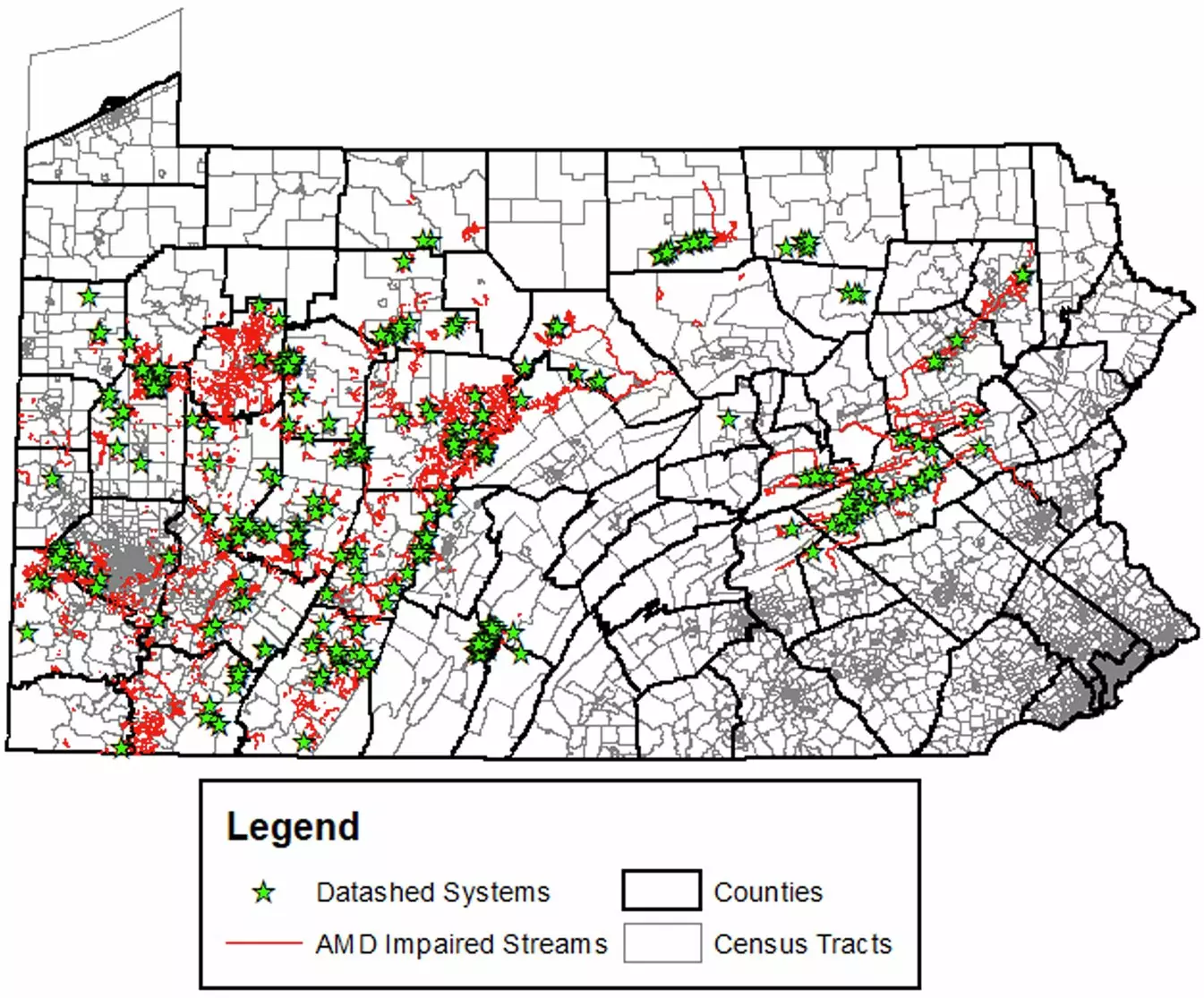Abandoned mine drainage (AMD) has long posed a significant environmental threat, particularly in states like Pennsylvania, where the coal mining legacy leaves a complex juxtaposition of ecological damage and socioeconomic hardship. New research undertaken by the University of Pittsburgh highlights the pressing need for comprehensive funding strategies to address the persistent issues caused by AMD. Despite past successes in treating AMD through state and federal funding, the current financial support remains woefully inadequate to tackle the scope of the problem effectively.
Over the last 35 years, collaborative efforts. led by the Pennsylvania Department of Environmental Protection (DEP) and various watershed organizations, have resulted in over 300 systems built to treat AMD before it contaminates local waterways. These systems have proven to be relatively cost-effective, achieving considerable success in protecting more than 1,000 miles of streams at an average cost of $5,700 per kilometer per year. Despite these achievements, it’s crucial to note that nearly 5,600 miles of Pennsylvania’s streams remain impaired due to AMD, highlighting an alarming gap between available resources and the enormity of ongoing environmental degradation.
The study co-authored by Jeremy Weber and Katie Jo Black emphasizes the inadequacies in the funding model. While the findings indicate notable improvements in water quality—where treated water significantly outperforms untreated inflow—many affected areas still face dire challenges. Inflow averages a pH level of 4.3, illustrating the severe acidity akin to tomato juice, while treated outflow achieves a much safer pH of near 6—the level considered acceptable for aquatic life.
The ramifications of AMD extend far beyond environmental concerns, directly impacting the livelihoods of communities in Pennsylvania. The research indicates that areas particularly exposed to AMD are home to residents earning about 30% less than those in unaffected regions, reinforcing the socioeconomic divide exacerbated by environmental degradation. Approximately 2.4 million Pennsylvanians live in regions with compromised streams, and this demographic is twice as vulnerable to the ongoing energy transition that seeks greener alternatives to coal.
With nearly half a million individuals residing in communities where half or more of local streams are impaired, the research sheds light on the significant disparities in both household incomes and property values. Homes in these affected areas are estimated to be 50% less valuable than those in healthier regions, further impeding local economies already struggling with the legacy of coal mining.
The research aligns with recent legislative efforts, notably the 2021 Infrastructure and Investment and Jobs Act (IIJA), which earmarked $16 billion for the cleanup of abandoned mines and wells. However, questions linger regarding the deployment of these funds and which communities will see tangible benefits. As noted in the study, while the IIJA represents a historic funding opportunity, Pennsylvania is set to receive approximately one-third of the allocated resources, yet the overarching strategy for implementation remains vague.
Estimations suggest that Pennsylvania will need a staggering $1.5 billion over the next 25 years just to address the future treatment of AMD, on top of an additional $3.9 billion to deal with other abandoned mine hazards like sinkholes and open shafts. The outdated systems currently in place consist of nearly 1,000 miles of streams requiring immediate intervention—a daunting statistic underscoring the need for a robust, long-term financial framework.
Pennsylvania faces a critical juncture concerning its natural resources and community health, with AMD at the center of both environmental and socioeconomic challenges. The research illuminates the impressive achievements already made in treating mine drainage but highlights a clear and pressing need for renewed funding and strategic planning. Addressing the inadequacies in current appropriations and ensuring that future investments are directed toward the most affected and vulnerable communities will be essential for both ecological recovery and economic revitalization. As the state moves forward, it must prioritize these issues to achieve sustainable development while safeguarding the well-being of its residents.


Leave a Reply